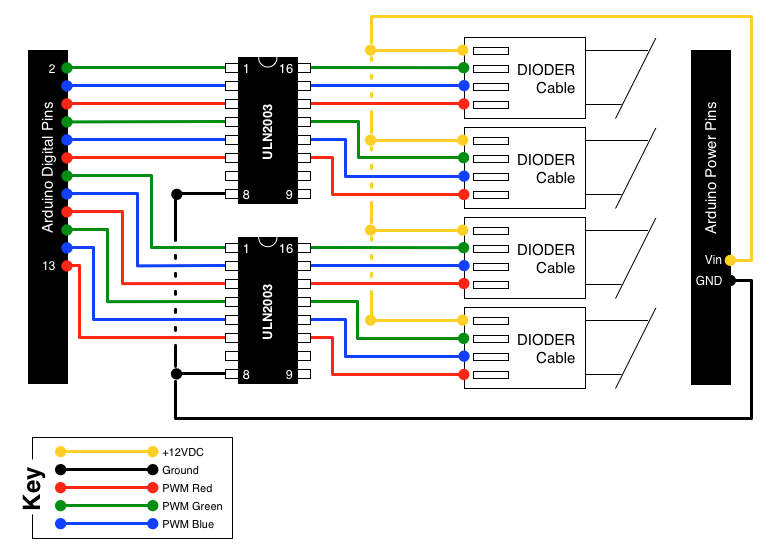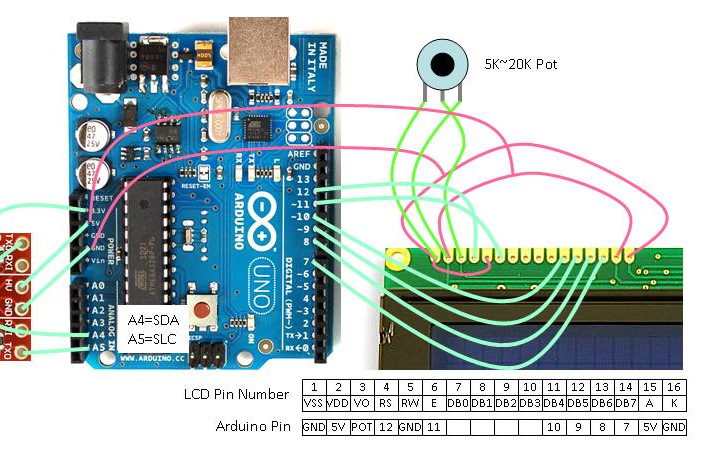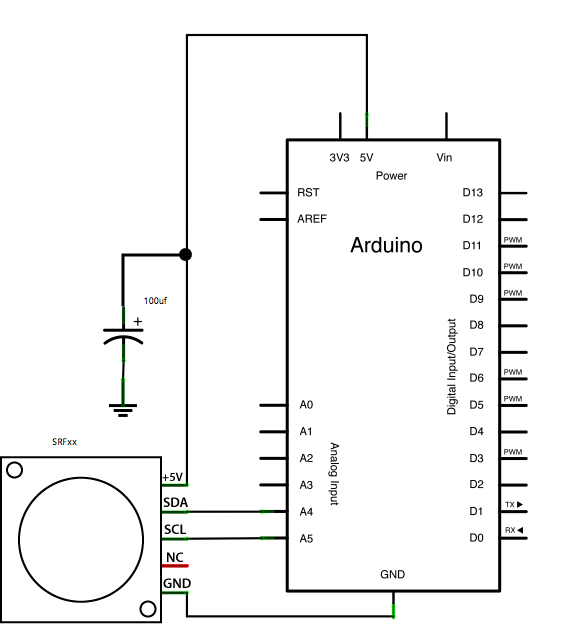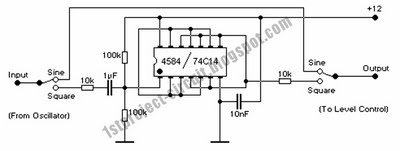
arduino dioder

A few weeks ago, it was noted that IKEA offers a set of color-changeable LED strips. There has been a search for an effective method to provide...
The color-changeable LED strips from IKEA are designed to offer flexibility in lighting options for various applications. These LED strips typically utilize RGB (Red, Green, Blue) LEDs, allowing users to mix colors and create a wide spectrum of lighting effects. The control mechanism for these strips often involves a dedicated remote control or a mobile application, enabling users to select colors, adjust brightness, and potentially set lighting schedules.
In a typical circuit configuration for an RGB LED strip, each color channel is driven by a separate transistor or MOSFET to handle the current required for the LEDs. A microcontroller may be used to manage the color mixing by controlling the duty cycle of each channel through Pulse Width Modulation (PWM). This allows for smooth transitions between colors and the creation of dynamic lighting effects.
Power supply considerations are crucial, as LED strips require a stable DC voltage, often around 12V or 24V, depending on the specific product. The circuit design must include adequate current limiting resistors or constant current drivers to prevent damage to the LEDs. Additionally, the layout should account for heat dissipation, as high-power LEDs can generate significant heat during operation.
For enhanced functionality, integration with smart home systems can be achieved through Wi-Fi or Bluetooth modules, allowing for voice control and automation features. The overall design should prioritize user safety, ensuring that all components are rated for the intended load and that proper insulation and protection measures are in place.
In summary, the implementation of color-changeable LED strips involves a well-designed circuit that incorporates RGB LEDs, control mechanisms, and safety considerations, providing users with customizable and dynamic lighting solutions.A few weeks ago, it came to my attention that IKEA do a set of colour-changeable LED strips. I ve been looking for a decent way of providing .. 🔗 External reference
The color-changeable LED strips from IKEA are designed to offer flexibility in lighting options for various applications. These LED strips typically utilize RGB (Red, Green, Blue) LEDs, allowing users to mix colors and create a wide spectrum of lighting effects. The control mechanism for these strips often involves a dedicated remote control or a mobile application, enabling users to select colors, adjust brightness, and potentially set lighting schedules.
In a typical circuit configuration for an RGB LED strip, each color channel is driven by a separate transistor or MOSFET to handle the current required for the LEDs. A microcontroller may be used to manage the color mixing by controlling the duty cycle of each channel through Pulse Width Modulation (PWM). This allows for smooth transitions between colors and the creation of dynamic lighting effects.
Power supply considerations are crucial, as LED strips require a stable DC voltage, often around 12V or 24V, depending on the specific product. The circuit design must include adequate current limiting resistors or constant current drivers to prevent damage to the LEDs. Additionally, the layout should account for heat dissipation, as high-power LEDs can generate significant heat during operation.
For enhanced functionality, integration with smart home systems can be achieved through Wi-Fi or Bluetooth modules, allowing for voice control and automation features. The overall design should prioritize user safety, ensuring that all components are rated for the intended load and that proper insulation and protection measures are in place.
In summary, the implementation of color-changeable LED strips involves a well-designed circuit that incorporates RGB LEDs, control mechanisms, and safety considerations, providing users with customizable and dynamic lighting solutions.A few weeks ago, it came to my attention that IKEA do a set of colour-changeable LED strips. I ve been looking for a decent way of providing .. 🔗 External reference





